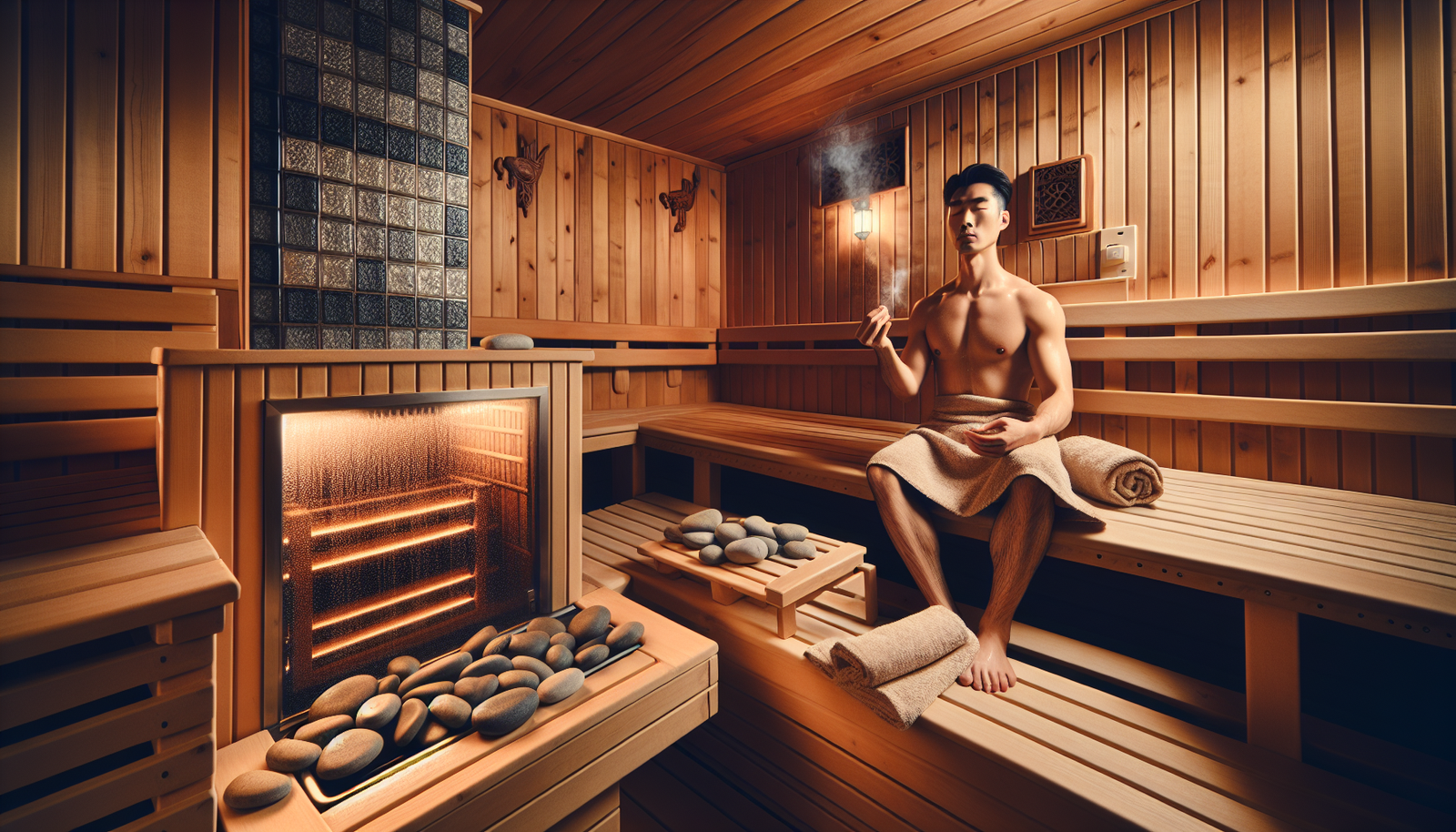Saunas have been around for centuries, providing a multitude of health benefits and an unmatched relaxation experience. However, amidst the rising popularity of sauna use, a common question often arises: are there any special breathing techniques to enhance the sauna experience? While the answer may surprise you, there are indeed specific breathing techniques that can optimize your time in the sauna, ensuring you reap the maximum benefits for your mind and body. From deep-breathing exercises to mindful meditation, these techniques can help you achieve a higher state of relaxation and rejuvenation while basking in the soothing heat of the sauna. So, let’s explore the world of sauna breathing techniques and unlock the secret to taking your sauna sessions to a whole new level.
Benefits of Sauna Use
Saunas offer numerous benefits for your overall health and well-being. One of the major advantages is improved cardiovascular health. The heat from the sauna causes your blood vessels to dilate, increasing blood flow and circulation throughout your body. This helps to lower blood pressure and improve cardiovascular function. Regular sauna use has been linked to a reduced risk of heart disease and stroke.
Another benefit of saunas is detoxification. Sweating is the body’s natural way of eliminating toxins, and saunas provide the perfect environment to induce sweating. As you sit in the sauna, your body temperature rises, prompting your sweat glands to kick into high gear. This process helps to flush out toxins and impurities from your body, leaving you feeling refreshed and rejuvenated.
Saunas are also known for their stress reduction benefits. The heat and warmth of the sauna help to relax your muscles and release tension, promoting overall relaxation and a sense of well-being. Spending time in the sauna can help you unwind after a long day, alleviate stress, and improve your mood.
Additionally, saunas are great for muscle relaxation. The heat from the sauna helps to relieve muscle soreness and tension by increasing blood flow to your muscles. This increased blood flow delivers much-needed oxygen and nutrients, aiding in the recovery process and promoting muscle relaxation. Whether you’re an athlete looking to recover after a workout or simply want to ease tension in your muscles, spending time in the sauna can provide the relaxation and relief you need.
Breathing in a Sauna
Taking deep, intentional breaths in the sauna can greatly enhance the benefits of your sauna experience. The heat and humidity in the sauna create a unique opportunity to focus on your breath and practice different breathing techniques. One of the most noticeable effects of being in a sauna is the way it affects your breathing patterns.
In a sauna, the heat causes your breathing to become deeper and slower. This natural response is driven by the body’s attempt to cool itself down and maintain a steady internal temperature. By paying attention to your breath in the sauna, you can tap into its calming effects and enhance your overall sauna experience.
Natural Breathing Patterns
When you enter a sauna, your body naturally adjusts its breathing patterns to adapt to the heat. In this environment, your breath tends to become deeper, more diaphragmatic, and slower. The warm and humid air in the sauna can also help to open up your airways, making it easier to take deep breaths. It’s important to allow your body to settle into its natural breathing rhythm, taking slow and steady breaths.
Deep Breathing Exercises
Engaging in deep breathing exercises in the sauna can amplify the benefits of sauna use. Deep breathing helps to calm the mind, reduce stress, and increase oxygen intake. One popular technique is the 4-7-8 breathing method, where you inhale deeply through your nose for a count of 4, hold your breath for a count of 7, and exhale slowly through your mouth for a count of 8. Repeat this cycle several times to fully relax and deepen your breathing.
Alternate Nostril Breathing
Another breathing technique to try in the sauna is alternate nostril breathing. This technique involves using your fingers to block one nostril while inhaling through the other, then switching sides, exhaling through the opposite nostril. Alternate nostril breathing helps to balance and harmonize the body and mind, promoting a sense of relaxation and well-being. It can be a great way to enhance your sauna experience and deepen your connection with your breath.

Proper Breathing Techniques in a Sauna
While the sauna provides a unique environment for practicing and improving your breathing, there are some key techniques to keep in mind to maximize the benefits.
Maintaining steady inhalation and exhalation is crucial in a sauna. As the heat and humidity can initially feel overwhelming, it’s important to focus on keeping your breaths slow and consistent. This helps to regulate your body temperature and prevent any discomfort or lightheadedness.
It is also essential to focus on diaphragmatic breathing in the sauna. This type of breathing involves engaging your diaphragm muscle and expanding your belly as you inhale deeply. This method allows for greater oxygen intake and relaxation of the body. By consciously directing your breath towards your diaphragm, you can enhance the overall effectiveness of your sauna session.
Avoid shallow breathing in the sauna, as it can limit the benefits of the heat and humidity. Shallow breathing restricts oxygen intake and can contribute to feeling light-headed or fatigued. Instead, focus on deep, intentional breaths, filling your lungs with fresh air and allowing the warmth of the sauna to penetrate deeper into your body.
Practicing mindfulness while breathing in the sauna can also enhance the experience. Pay attention to each inhale and exhale, fully immersing yourself in the present moment. Allow any distractions or racing thoughts to fade into the background as you focus solely on the sensation of your breath. This mindfulness practice can help promote relaxation, reduce stress, and increase your overall enjoyment of the sauna session.
Precautions for Sauna Use
While saunas offer numerous health benefits, it’s important to keep in mind some precautions for safe and optimal sauna use.
Firstly, it’s essential not to stay in the sauna for too long. Extended sessions in the sauna can lead to overheating and dehydration. Start with shorter sessions of around 10-15 minutes and gradually increase the duration as your body becomes accustomed to the heat. Listening to your body is crucial; if you start to feel lightheaded, dizzy, or uncomfortable, it’s time to exit the sauna and cool down.
Staying hydrated is another key precaution to keep in mind. Sweating in the sauna can lead to fluid loss, so it’s important to drink water before, during, and after your sauna session to replenish lost fluids and prevent dehydration. Remember to sip water slowly and avoid excessive consumption to avoid discomfort.
Listening to your body is essential when using a sauna. If you have any underlying health conditions or are pregnant, it is important to consult with a medical professional before using a sauna. They can provide guidance on whether using a sauna is safe and suitable for your specific circumstances.

Conclusion
Saunas offer a multitude of benefits, from improved cardiovascular health to stress reduction and muscle relaxation. By practicing proper breathing techniques in the sauna, such as natural breathing patterns, deep breathing exercises, and alternate nostril breathing, you can enhance these benefits and maximize your sauna experience. Remember to maintain steady inhalation and exhalation, focus on diaphragmatic breathing, and avoid shallow breathing. Practicing mindfulness can further deepen your connection with your breath and enhance relaxation. As with any activity, it’s important to take precautions when using a sauna, such as not staying in for too long, staying hydrated, and listening to your body. Always consult with a medical professional if you have any concerns or underlying health conditions. So, next time you step into a sauna, take a deep breath, and enjoy the relaxing and therapeutic benefits it has to offer.

